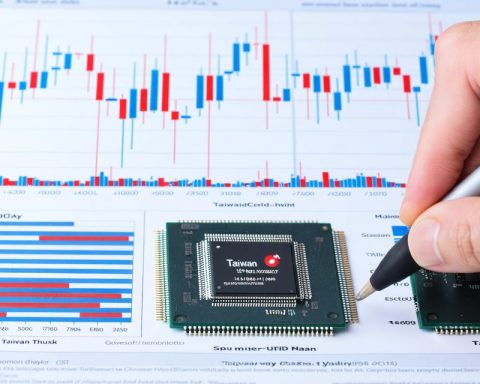- Japan’s public debt is projected to reach 232.7% of GDP, necessitating urgent fiscal reform.
- The International Monetary Fund stresses Japan must address rising social security costs and disaster preparedness.
- The Bank of Japan raised interest rates for the first time in seventeen years, signifying potential future increases if economic conditions improve.
- Japan aims to ease trade tensions by boosting American LNG imports and facilitating significant Japanese investments in the U.S.
- TOYO Co., Ltd. exemplifies Japan’s shift toward innovative industries, with plans to expand solar technology domestically and internationally.
- Japan’s adept management of fiscal discipline and growth could shape its global economic influence, presenting both risks and opportunities for investors.
As Japan stands at the crossroads of economic imperative and fiscal reform, the nation juggles the challenges of an aging population, rising public debt, and a rapidly changing global economic landscape. Japan’s soaring debt—projected to reach a staggering 232.7% of GDP this year—highlights a pressing need for financial recalibration. The International Monetary Fund warns that Japan must act swiftly to bolster its economy amidst increasing pressures from social security costs and disaster preparedness.
Amid these challenges, Japan’s economic strategy takes a bold turn. The Bank of Japan’s decision to raise interest rates to their highest level in seventeen years marks a significant shift from decades of ultra-low rates. If Japan’s economic conditions align to create a “virtuous cycle” of rising prices and wages, further rate hikes could be on the horizon.
Meanwhile, Japan’s intricate dance with global trade dynamics intensifies. As tensions simmer over trade imbalances, diplomatic finesse surfaces. Japanese Prime Minister Shigeru Ishiba pledges to increase imports of American LNG while orchestrating substantial investments in the U.S. from Japanese automakers like Toyota and Isuzu Motors, reinforcing economic alliances and calmling bilateral tension.
Yet, it’s not only the macroeconomic maneuvers that steer Japan’s course. Companies like TOYO Co., Ltd., pioneers in solar technology, cast a ray of optimism—embodying the nation’s forward-thinking industrial pivot. With anticipated expansions both domestically and in the U.S., TOYO peeks through a sliver of hope in Japan’s broader economic tapestry.
In a world where economic currents continuously shift, Japan’s ability to balance fiscal discipline with ambitious growth aspirations may well determine its standing on the global stage. For investors around the globe, Japan’s precise orchestrations promise both challenges and opportunities in equal measure.
Japan’s Economic Balancing Act: Strategies, Challenges, and Opportunities for Investors
How-To Steps & Life Hacks
Navigating Japan’s Economic Climate for Investors
1. Understand Interest Rate Impacts: With the Bank of Japan elevating interest rates, investors should evaluate which sectors are most affected. For example, higher rates can lead to increased borrowing costs but might benefit financial institutions like banks.
2. Diversify Investments: Consider diversifying portfolios to include sectors poised for growth such as green energy. Companies like TOYO Co., Ltd. are part of a larger trend towards sustainable energy solutions, potentially offering lucrative returns.
3. Monitor Trade Dynamics: Keep track of Japan’s trade policies and import agreements (e.g., American LNG imports). These decisions can signal shifts in economic policies and impact currency strength.
Real-World Use Cases
Economic Mitigation Strategies
– Corporations: Companies like Toyota and Isuzu Motors are investing in the U.S. to mitigate trade tensions while expanding their global footprint. This dual strategy enables companies to maintain competitive prices and secure supply chains.
– Government: By supporting renewable energy ventures and infrastructure investments, Japan seeks to rejuvenate local economies and counteract demographic challenges.
Market Forecasts & Industry Trends
Japan’s Future Economic Landscape
– Rising Interest Rates: Expectations of subsequent rate hikes could impact housing markets and consumer lending. However, it may improve domestic savings rates, offering long-term capital for investments.
– Green Energy Surge: According to a report by the International Energy Agency, Japan’s renewable sector is expected to grow significantly, providing opportunities for innovation and investment.
Reviews & Comparisons
– Japan vs. Other Economies: Compared to Western economies, Japan’s recent policy shift presents a more cautious approach to economic stimuli. For instance, while the U.S. employs large-scale fiscal spending, Japan remains centered on monetary tools and trade agreements.
Controversies & Limitations
Debt Dilemma
– Japan’s public debt, at 232.7% of GDP, poses significant fiscal risks, limiting the country’s policy maneuverability in economic downturns.
– Pension Pressure: Aging demographics exert pressure on Japan’s social security systems, demanding urgent reforms to prevent fiscal exhaustion.
Features, Specs & Pricing
– Investment in LNG: Japan’s pledges to increase LNG imports demonstrate a strategic move to diversify energy sources while fostering strong trade relations with the U.S.
– Solar Technology Advancements: Companies like TOYO Co., Ltd. are leading in solar tech, reflecting Japan’s industrial shifts toward sustainable energy.
Security & Sustainability
Economic Security Measures
– With a focus on disaster preparedness and resilient infrastructure, Japan underscores its commitment to safeguarding economic security amidst natural and market disruptions.
Insights & Predictions
– Long-term Economic Recovery: With strategic reforms and technological investments, Japan is likely to gradually stabilize its fiscal situation. However, continuous monitoring and adaptive strategies will be essential in remaining competitive on the world stage.
Tutorials & Compatibility
Investment Toolkits for Foreign Investors
– For investors intrigued by Japan’s economic strategies, explore exchange-traded funds (ETFs) focusing on Japanese markets. Platforms like E*TRADE offer tools for simulating market scenarios and investment outcomes.
Pros & Cons Overview
– Pros:
– Japan’s investment in green technologies could yield sustainable returns.
– A focused trade strategy enhances global competitiveness.
– Cons:
– High public debt remains a looming threat.
– Demographic shifts necessitate comprehensive policy responses.
Actionable Recommendations
– Stay Informed: Regularly follow updates from credible financial publications like Bloomberg and the Nikkei Asian Review.
– Evaluate Currency Hedging: Given the fluctuating yen, consider employing currency hedging strategies to mitigate exchange rate risks.
For additional resources on Japanese economic strategies, visit Bank of Japan.















